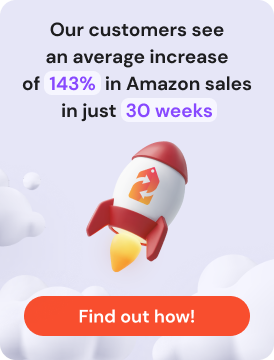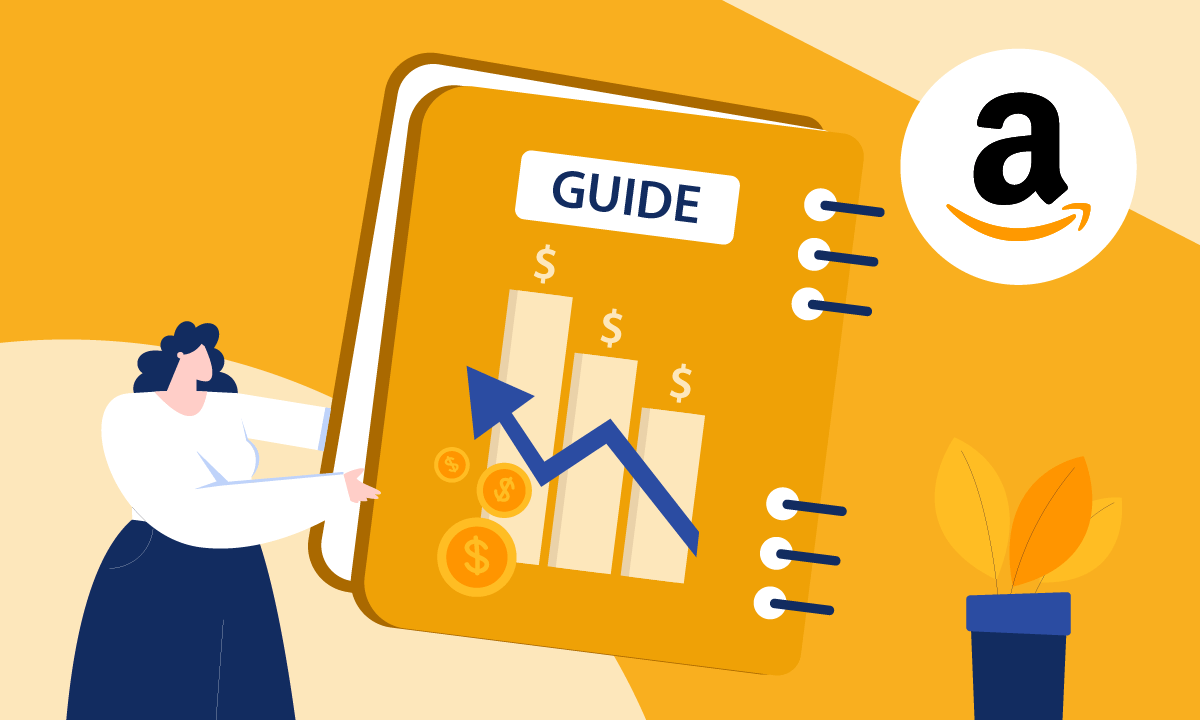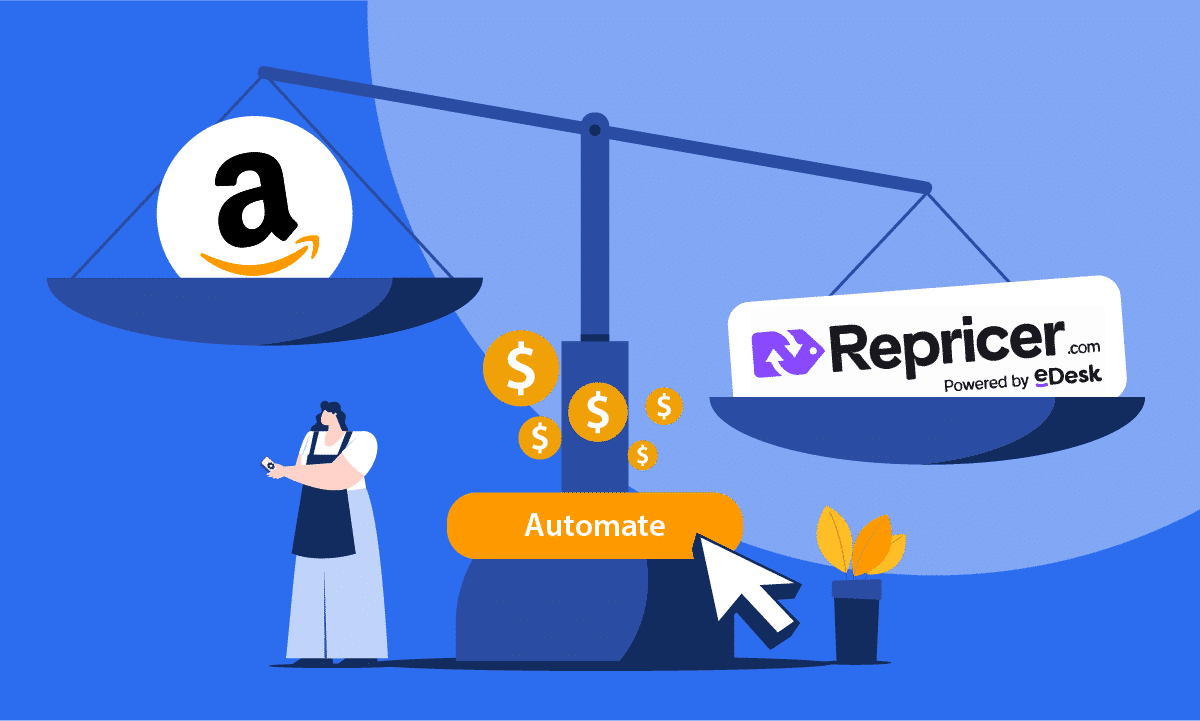Amazon has come a long way since its days of selling only books. As the ecommerce behemoth continues to expand its product offering, driving traffic to your listings is hard — and in a sea of compelling competitors, winning the Buy Box and converting those customers is harder.
Optimizing your listings for Amazon SEO should be standard practice for any serious seller. The website’s search algorithm may be less sophisticated than Google’s, but this is one of the reasons why making sure your listing appears relevant to as many search queries as possible is the key to success.
The foundation of Amazon SEO is keyword research, but there are lots of less obvious factors which the site uses to rank products, such as the click-through rate on its SERP, time on page and conversions.
For new and experienced Amazon sellers alike, taking the time to conduct detailed competitor analysis before putting any product online is the best way to guide your listing optimization. Understanding your market and your competitors will give you an idea of the work required to make your products stand out.
Want to ensure your products are primed for success? Here are six overlooked Amazon competitor analysis steps that will help you determine your strengths and form a framework for optimizing your listings for conversion.
1. List the keywords you want to rank for
To increase your search engine rankings, you first need to find out what keywords your competitors rank for. This will help you determine which terms are most likely to drive sales for your product. The best way to do this is by using a keyword research tool. Check out this simple guide by AI Hello to learn more about keyword harvesting.
Related: The complete guide to Amazon keyword research
2. Take a top-level view of the Amazon search results page
Your next step is to perform an Amazon search for each of your main keywords. This will help you to understand the main players in your product category. After a few searches, you’ll get a feel for which brands are currently dominating your product space.
Take a look at only the first and second page of results for your main keywords and note any patterns you see: terms that appear regularly in titles; what the main images look like; the average number of product reviews; who is dominating the sponsored ads. This will help you determine the competition and give you an idea of how you could position yourself.
For example, if you sell a popular product and notice that the main images on the search results page look similar, could you find a way to stand out in your images? Check out the below example of a search results page for black women’s Converse. Notice how one listing, in particular, stands out, purely because of how it’s been photographed from a different image angle than the others.

The same goes for price, titles and product reviews. Make a note of the patterns you see and keep this information in mind when creating your new product listing.
3. Narrow down the big players
Now that you’ve taken a bird’s eye view of what shoppers see when they search for your keyword, it’s time to narrow down on your competitor analysis and discover which brands are performing well and see if you can spot the factors that could be influencing their rankings on the search results page.
At a glance, do they have the cheapest price or lots of reviews or are there other things that could catch the consumer’s eye, such as the feature image or title?
Now, look at which results rank further down the page and compare them with the best-sellers. Can you spot anything that could influence their rankings?
Let’s take a quick example. I searched for a generic product using the broad term “tarpaulin,” which has over 90,000 monthly searches on Google.
Pro tip: A great tool to calculate keyword search volume is MerchantWords, which gives you accurate search queries and monthly search volume specific to Amazon.
Scrolling past the sponsored ads, I notice that the best-sellers seem to be ranking well because of their cheap prices, which in turn have resulted in lots of reviews.

As we scroll further down the first-page rankings, I notice the second-to-last listing from the bottom. It’s priced well, but not much cheaper than results listed on pages two or three. Additionally, it has no reviews.

On closer inspection, I discover that this item was first listed four months ago. So, what could be contributing to its first-page ranking?

It doesn’t take long to figure out that this seller has paid close attention to detail in their product listing where their competitors haven’t—a strategy that has proven successful in this case.

It is worth noting, however, that if this seller spent some time actively gathering reviews it would significantly increase the potential for even higher rankings.
4. Analyze your competitors’ product pages
To give your research a strategic objective, focus on five to 10 competitor listings that you have seen crop up for most of your keyword searches and take a closer look at their product pages.
Title
The title you give your listing is the main factor Amazon uses to determine how relevant your product is to a customer’s search query—and it’s one of the first things that will encourage clicks on the search results page.
It’s worth noting the keywords that are included in the title of top-performing listings, as well as what terms are neglected. For example, a competitor may rank well simply because he has the lowest price, but shoppers looking for quality will be drawn to listings that highlight a product’s attributes.
In our tarpaulin example, the seller uses words such as “heavy duty,” “industrial strength” and “professional use,” all of which allude to a high-quality product. Even including the exact thickness and weight of the material shows credibility at first glance and will encourage clicks.

Compared with the title for the top competitor listing below, the difference is very clear.

Bullet points, descriptions
Pay attention to the language that your competitors use, what product features they highlight and how much information they include. This will help you provide better, more informative listings that will truly showcase your product and encourage conversions.
Going back to that tarpaulin listing, not many people would think it possible to write such a detailed description on something so plain. But going above and beyond what the average seller will do is exactly where you’ll reap results.
Notice the persuasive language used in the listing’s bullet points to encourage conversions. In addition, capital letters draw attention to the main features and ensure everything the buyer needs to know is available without the need to search.

The same principle applies in the description. Although they haven’t used Enhanced Brand Content or images, they’ve still made a good attempt to make their description stand out from the competition.
The product description is likely the last piece of information a potential customer will read before making their purchase decision, so reinforcing the key features and including some creative language will get you one step closer to Amazon’s massive average conversion rate of 15%.
One thing is for sure if the description is something that your competitors neglect (which is the case for many sellers), this is your chance to snag those buyers who take the time to read below the fold.
Image quality
Your pictures are the closest thing your customer will get to your product before they purchase, so having the right images is key to winning that sale.
By now, you should have a good idea of the standard you’ll competing against in your niche and how you can find your way into the market. If you notice that the average image quality is poor, this is your chance to stand out with your images and drive conversions.
High-quality images, a couple of angles and a good close-up are basic requirements for images that sell.
Pro tip: “If I’d have to pick one single thing that would sell a product online, it’s images.” – conversion coach Peep Laja,
5. Use reviews to spot competitor weaknesses
Now that we’ve looked at what competitors highlight in their listings, it’s also important to see what they neglect to mention or where they are weak. This will give you an opportunity to identify ways that you can cater to the customer’s pain points and answer any questions that your competitors haven’t.
Product reviews are not only a great way to find new keywords by discovering how your customers speak about your product, but they are also a goldmine for spotting your competitors’ weaknesses. If your rivals have a large volume of reviews, before getting worried about the work involved with increasing your product reviews, go straight to their negative reviews and see what you can find.
Ask yourself these questions:
- What is my customer’s biggest problem with my competitors’ products?
- How can my product solve this problem or how is it different?
- What do customers love about my competitors’ products and can I offer the same benefits?
- If so, how will I highlight this in a more engaging way? If not, what other benefits can my product offer?
Use the answers to these questions as a framework for your product listing, highlighting your solutions as prominently as possible.
6. Identify customer pain points with Q&As
The Q&A feature on Amazon helps you to identify key pieces of information that your customer did not find in the competitor’s listing. This gives you the opportunity to include those details in your bullet points in order to encourage them to choose your product over the competition.

Remember, the longer a customer has to spend researching a product, the longer the journey to the final purchase and the greater the risk of losing out to competitors. So preempting and addressing any potential stumbling blocks in your listing will have a huge impact on your conversion rate.
Pro tip: List the most common recurring questions and make sure the answers are prominent in your bullet points and description. For example, if “How do I clean this rug?” is a frequently asked question on a competitor listing, include the cleaning instructions for your products in your description.
Summary
- Outline a clear set of keywords you want to target before beginning.
- Get a broad picture of the competitor space using Amazon search results to start.
- Narrow down the main players in your category and identify what factors could have an impact on their rankings, as well as other sellers who are ranking on the first page.
- Focus on five to 10 recurring competitor listings and take note of where you could highlight a competitive advantage.
- Use product reviews to uncover your competitors’ weaknesses. Rather than getting spooked by how many reviews they have, use this an opportunity to shine.
- Use the Q&A section to answer common customer queries in your listing.
Repricer.com is the ultimate Amazon repricing software available, enabling you to react instantly to changes in the marketplace and stay ahead of your competitors. Start a free trial today and win the Buy Box.






